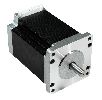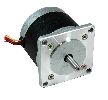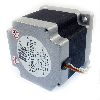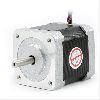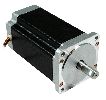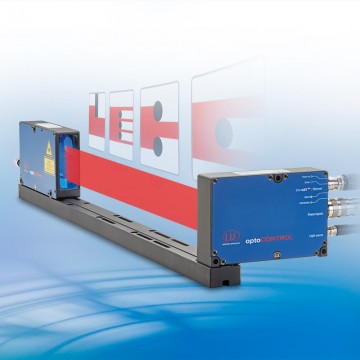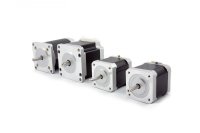
Stepper motors, although widely used, still hide their secrets from many people.
In a short article we answer the 13 questions , which are most often intriguing their users.
In the serial connection, the torque is greater at the same current for low speed. In the case of a parallel inductance connection, it increases by four times, the engine's potential in the upper frequency range is greater, but to get the same torque you need to control twice more (note the temperature - the engine's loss is increasing).
2. Why are the motors manufactured with 8, - 6, - or 4 wires?
10. What resonance damping capabilities are available?
Resonances are very strong in full-step control. The additional moment of inertia lowers the resonant frequency, the friction helps suppress the resonance amplitude. If possible, it is advisable to select the start frequency above the resonance.
An additional possibility of reducing resonance ampiltuda gives half-step and microstep. There are also drivers with advanced electronic resonance damping methods. For small engines, the cheapest method is to use viscose or magnetic silencers.
11. Why does the motor make a jump when the current is switched on (LUZ signal), even though no pulses are applied to the controller?
The 1.8 ° hybrid two-phase motor has 200 natural positions. The electric cycle is 7.2 °. Therefore, the maximum distance of the rotor to the fixed position is + -3.6 °.
After completing a certain number of steps in one direction and exactly the same number of steps in the second one, the engine does not become perfectly in the same position. This result consists of two things: the motor has a magnetic hysteresis, which manifests itself at the relapse (about 0.03 °). The mechanics attached (looseness, compliance) also affect the precision of stopping.
12. Is it necessary to have a special motor for microchip control?
A normal 1.8 ° engine is enough. The controller precisely increases the current level in the windings, which results in a higher step resolution. This means that the magnetic flux generated by the windings sets the rotor in intermediate positions.
13. Why the engine loses no-load steps during acceleration?
The most unfavorable working mode of the stepper motor is unloaded operation. The resonant frequency depends on the inertia of the rotor and the object. By connecting the external inertia of the object, the resonant frequency below the start is reduced.

